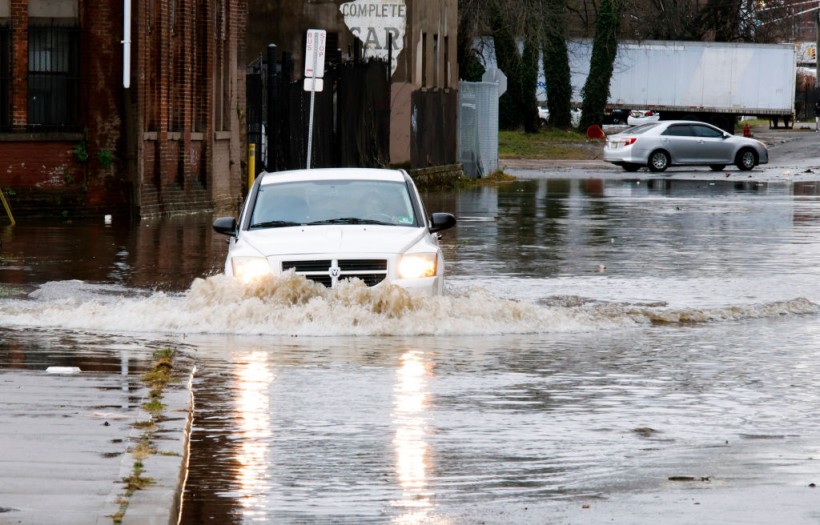A severe storm system that swept across the US north-east on Monday left a trail of destruction and disruption in its wake, affecting millions of people.
The storm, which intensified into a 'bomb cyclone', brought heavy rain and high winds that knocked out power, damaged property, and canceled flights.
In this article, we will explore the storm's damage, its impact on travel, and how residents are coping with the aftermath.
The storm's damage
 (Photo : Kena Betancur/Getty Images)
(Photo : Kena Betancur/Getty Images)

A powerful nor'easter that intensified into a 'bomb cyclone' wreaked havoc across New England on Monday and Tuesday, leaving more than 500,000 homes and businesses without power, flooding coastal areas, and downing trees and power lines with winds that sometimes reached hurricane strength.
The storm, which dumped 2 feet of snow in some parts of Vermont, picked up strength as it moved along the coast, battering Massachusetts and Rhode Island with extreme winds on Wednesday morning.
Gusts of 94 mph were clocked in Edgartown, Massachusetts, and the National Weather Service urged coastal residents to stay away from windows.
The outages affected schools, businesses, and hospitals, and officials warned that restoring power could take several days.
Massachusetts Gov. Charlie Baker said utility workers were doing their best to restore power, but in some cases, they needed to wait until the winds died down before it was safe to get up into bucket trucks.
Some residents described the storm as feeling like an earthquake, as their houses shook and cracked under the force of the wind.
In Milton, Massachusetts, a tree fell onto a home, landing on the roof above a bedroom where a 3-year-old was sleeping. No one was hurt.
The storm also caused fatalities in other parts of the US north-east, where heavy rain and high winds hit on Monday.
At least three people were killed as a result of the storm, according to MSN. A woman died in floodwaters outside Charleston, South Carolina and two men in northeastern states were killed as the storm moved toward Canada.
Also Read: U.S. Weather Forecast: Coastal Storm Possible This Weekend Until Next Week
The storm's impact on travel
The storm also had a major impact on air travel, as thousands of flights were canceled or delayed across the country.
According to FlightAware.com, more than 2,600 flights were canceled and 7,900 were delayed on Monday, affecting millions of passengers
. The worst-hit airports were in New York, Philadelphia, Boston, and Washington DC, where strong winds and low visibility made flying conditions hazardous.
Many travelers were stranded at airports, waiting for hours or days to rebook their flights or find alternative modes of transportation.
Some passengers expressed frustration and anger at the lack of information and assistance from airlines and airport staff.
Others tried to make the best of the situation, sleeping on cots, playing games, or making friends with fellow travelers.
The storm also disrupted road and rail travel, as many highways and bridges were closed due to flooding, debris, or accidents.
Amtrak suspended some of its services in the north-east corridor, citing safety concerns.
Some commuters resorted to using buses, taxis, or ride-sharing services, but faced long waits and high fares.
The storm is expected to weaken and move away from the region by Tuesday night, but the effects will linger for some time.
Residents are advised to stay safe and avoid unnecessary travel until the situation improves.
The storm also serves as a reminder of the need for better infrastructure and emergency preparedness, as climate change could make such extreme weather events more frequent and intense in the future.
Related article: US Weather Forecast: Heavy Rain, Flooding Expected from Southern Plains to Ohio Valley [NWS]
© 2024 NatureWorldNews.com All rights reserved. Do not reproduce without permission.

![Tsunami Hazard Zones: New US Map Shows Places at Risk of Flooding and Tsunamis Amid Rising Sea Levels [NOAA]](https://1471793142.rsc.cdn77.org/data/thumbs/full/70325/280/157/50/40/tsunami-hazard-zones-new-us-map-shows-places-at-risk-of-flooding-and-tsunamis-amid-rising-sea-levels-noaa.jpg)



